HOW DO you build the foundations of a potentially dynastic list?
For North Melbourne – which has now won 21 consecutive games – the first blocks were laid with a gameplan, formulated way back in 2018.
The Roos were keen to hit the ground running with their first AFLW team in 2019, and wanted to recruit players who would be able to execute a clean kicking, outside game, rather than the stodgy, contested style that dominated the early years of AFLW.
Gameplan first, players second.
It was a plan hatched by then-senior coach Scott Gowans (appointed in October 2017, giving him a year of planning before pre-season began), list manager Rhys Harwood (now senior assistant coach) and head of footy operations Laura Kane; with support from recruiter Josh Hare (now at Adelaide) and academy manager Lou Caluzzi (now football projects manager at the AFL).
Just seven of those players remain from the 2019 squad of 30: club recruits Jenna Bruton, Jasmine Garner, Emma Kearney, Emma King and Tahlia Randall; state-league recruit Ash Riddell and draftee Nicole Bresnehan.
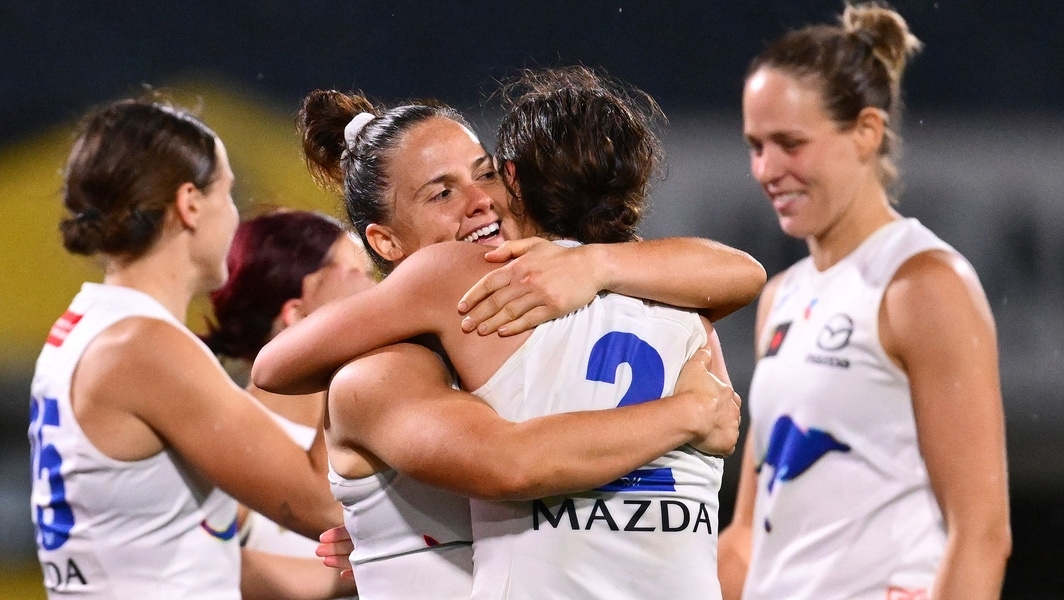
Emma Kearney hugs Libby Birch after the AFLW R9 match between North Melbourne and Richmond at Ikon Park on October 11, 2025. Picture: Getty Images/AFL Photos
The Kearney signing was a direct result of North Melbourne’s pre-AFLW relationship with her VWFL club Melbourne Uni, with Kane having been president prior to her role at North Melbourne.
Bruton and Garner, long-term partners, were somewhat of a package deal, attracted by North’s proven track record of supporting women’s football, as well as the opportunity to play together.
Bresnehan was drafted through North Melbourne’s alliance with Tasmania, a move that helped the club secure a licence.
The Tasmanian connection has actually been more miss than hit for the Roos, with Mia King comfortably the most important selection made through its exclusive draft pool, with Daria Bannister and Brooke Brown having since departed for Essendon.
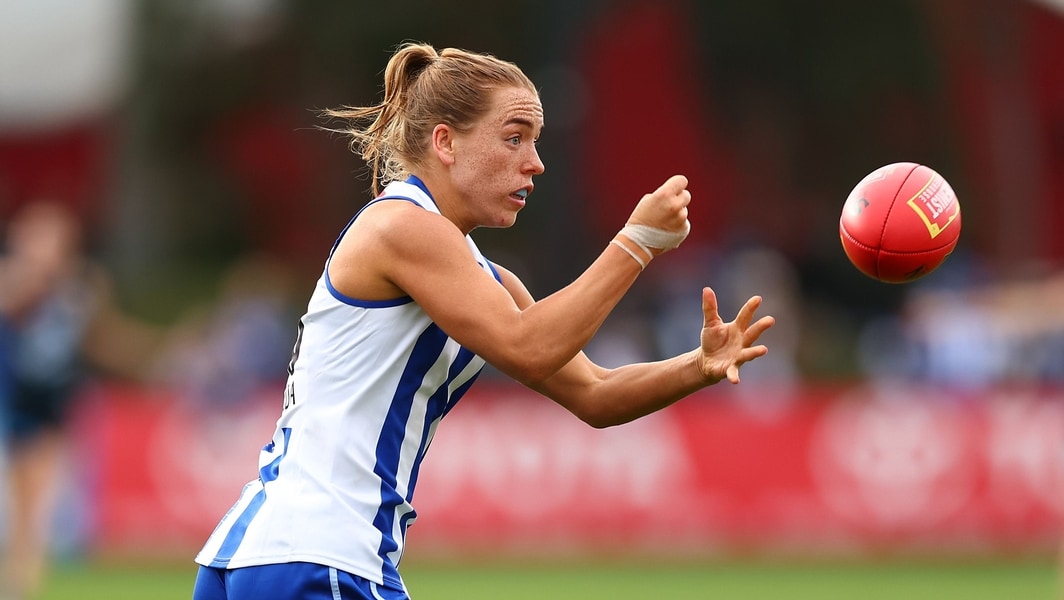
Mia King in action during North Melbourne’s clash against Carlton in round six, 2025. Picture: Getty Images
There’s no doubt that North Melbourne was given a considerable helping hand by the sheer lack of restrictions around signing players from other clubs back in 2018, but it’s also true that its previous work helped convince players that it would be entering in an environment fully supportive of the women’s game, especially if said players were disillusioned with their clubs.
The Roos missed out on finals in their first year due to the now-abandoned conference system, but won the third-most games for the season, and they only dropped one match in 2020 before the season was abandoned due to COVID-19.
The standard had been set, and word began to spread among the players – North Melbourne was a good place to play football, and a club that heavily invested in the program, far more than some others.
Success can attract more success, particularly if players are willing to accept a lower tier of payment in order to play for a great club.
Of its current squad of 30, six players – Libby Birch, Ari Hetherington, Kim Rennie, Eliza Shannon, Eilish Sheerin and Kate Shierlaw – were acquired through trades, although in Rennie’s case, the trade fell through and given the circumstances, other clubs were happy for her to cross to North Melbourne through the draft.
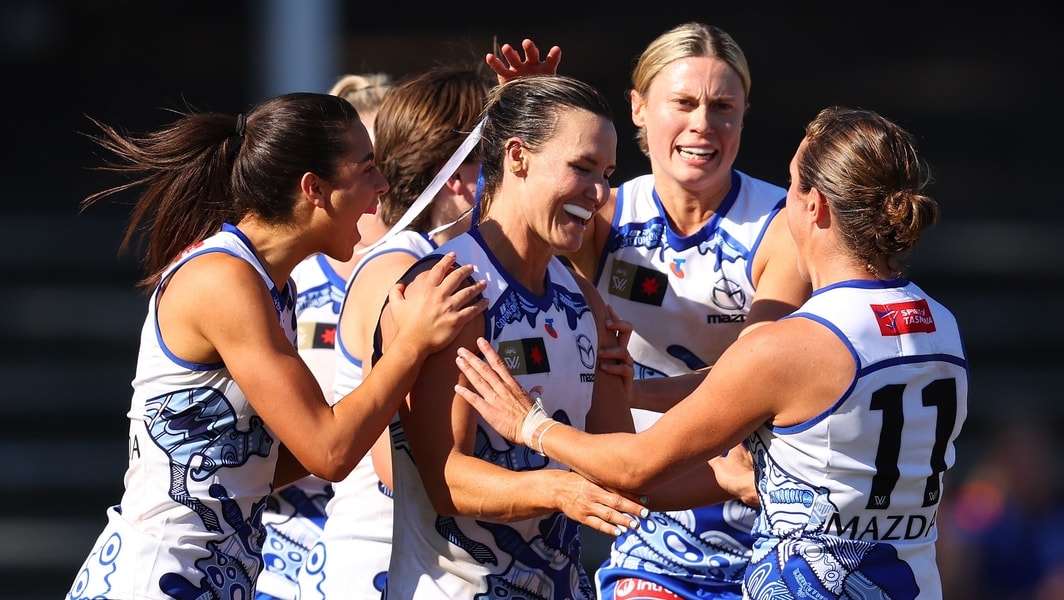
Eilish Sheerin celebrates a goal with teammates during round three, 2025. Picture: AFL Photos/Getty Images
Sheerin and Birch in particular were attracted to success, as was Shierlaw, who had the added bonus of joining partner Kearney in the stripes.
Shannon was secured for a song with pick 33 from the supplemental draft and most importantly, fit in with North Melbourne’s style of play – once again, the Roos were recruiting for their gameplan, rather than retrospectively trying to fit a gameplan to a wide array of players.
It’s a move far more often seen in the men’s game, and North Melbourne was ahead of the curve in the women’s space when it came to forward planning.
While not the first, the Roos have also been early adopters when it comes to Irish players, and are one of the most active in the space.
In part an additional luxury granted by strong depth in the squad, North Melbourne sees Irish players as a “free hit”, and as evidenced by Blaithin Bogue, currently coming third in the goalkicking charts, is able to tuck away a player for a year of development before playing them.
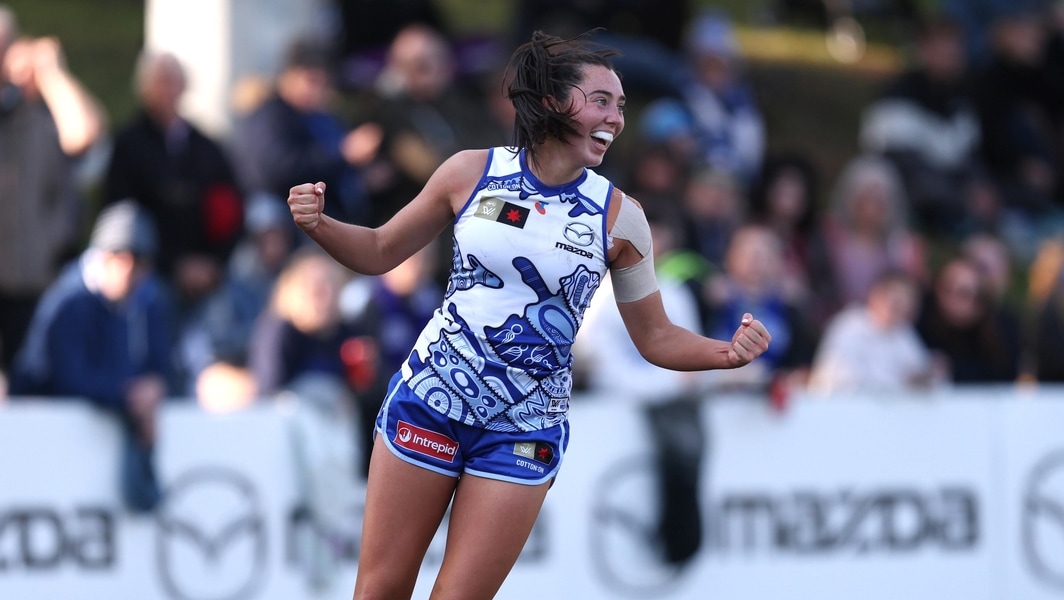
Blaithin Bogue during the AFLW Round four match between North Melbourne and Collingwood at Arden Street Ground, September 7, 2025. Picture: Getty Images
Vikki Wall and Erika O’Shea have become key contributors at either end of the field, and while the latter is a different style of player to now-Hawk Aileen Gilroy, North Melbourne has been able to replace her with ease.
The drafting has been canny.
Given a constant presence at the pointy end of the season, North Melbourne’s highest ever draft selection is pick 13, with both Tess Craven and Bella Eddey landing at Arden Street via that selection.
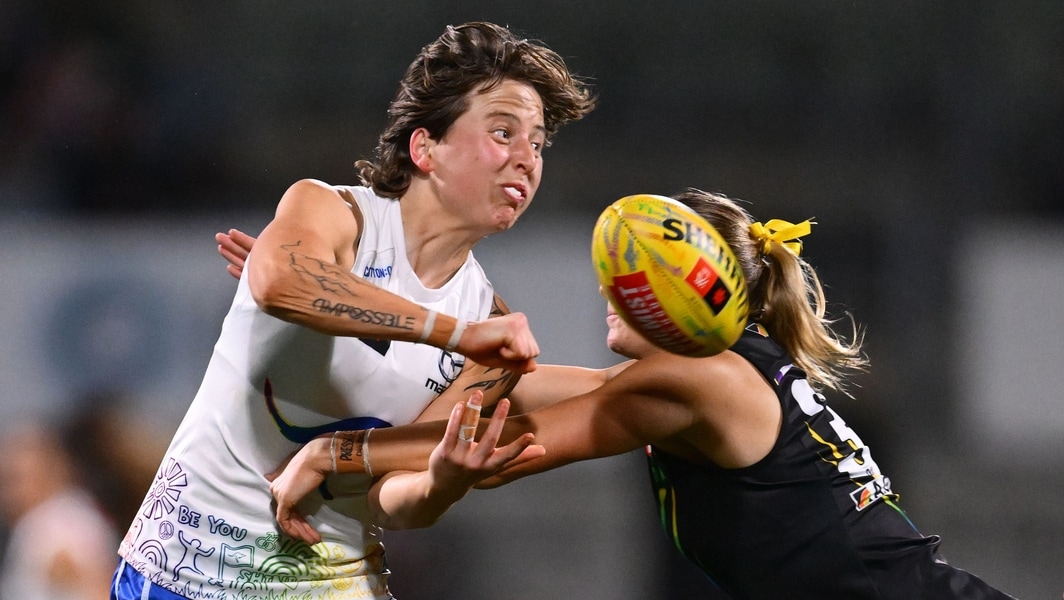
Tess Craven handballs during North Melbourne’s clash against Richmond in round nine, 2025. Picture: Getty Images
Craven was a top-ranked junior in a shallow 2021 draft, a hard contested ball-winner with problematic feet that scared most teams off. North picked her up and had the squad depth to just field her once in her debut season, giving her plenty of time to heal and rework her role.
She’s now one of the best-kicking wingers in the league.
Eddey was more speculative, a basketballer in the 2020 draft pool that saw very little on-field action that year. Again, her kicking skills were the selling point, as well as her natural footy smarts. Couple her with Alice O’Loughlin (pick 22), a rower with a bit of a dodgy back who hadn’t fully devoted herself to a complete football season but had plenty of skill, and the Roos had somehow created their next layer of talent from a group that played four weeks of football, at most, in their final year of juniors.
Key back Jas Ferguson was toiling away in Collingwood’s VFLW side, and was snared with pick No.51. Partner-in-crime Sarah Wright came from Carlton’s VFLW team, and was acquired with pick No.32.
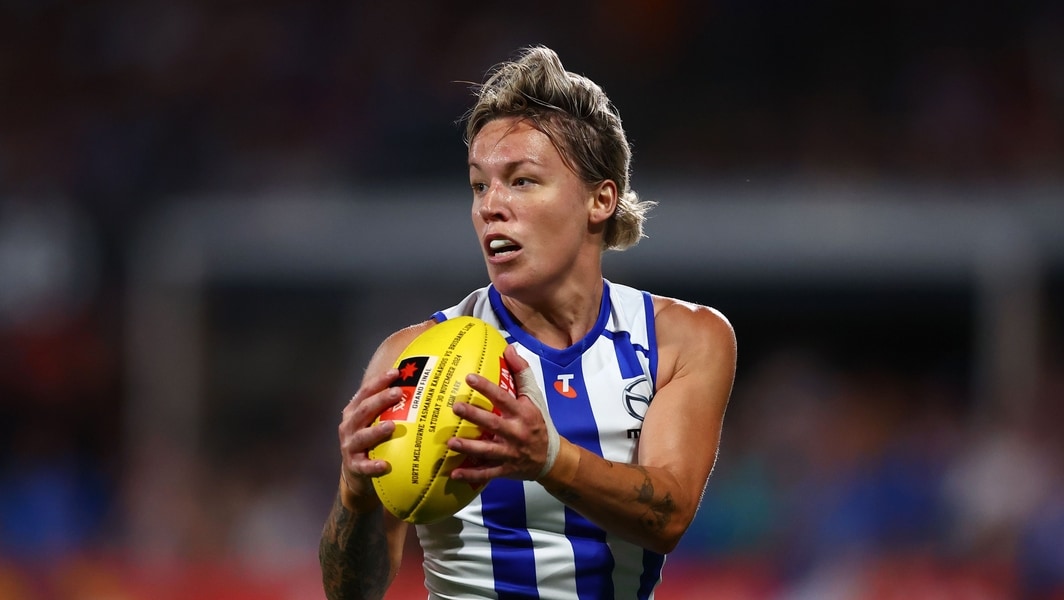
Sarah Wright in action during the AFLW Grand Final between North Melbourne and Brisbane at Ikon Park. Picture: AFL Photos
Winger Amy Smith was a father-daughter pick, a basketballer who was snared with pick No.55. Midfielder Ruby Tripodi was pick No.23 from Williamstown in the mature-age supplemental draft ahead of the 2023 season. Ten of the 22 players taken before her are no longer on an AFLW list.
Both Smith and Tripodi were selected in part due to their character. There was potential there, but there was also a willingness to simply work their backsides off to improve, year after year.
It’s an atmosphere fostered by Riddell, who was famously overlooked in both the 2017 and 2018 drafts, when she was an undersized, good-ordinary midfielder.
She had a relationship with Gowans from their time at Diamond Creek, and he gave her a chance as an open-age signing in the Roos’ initial list.
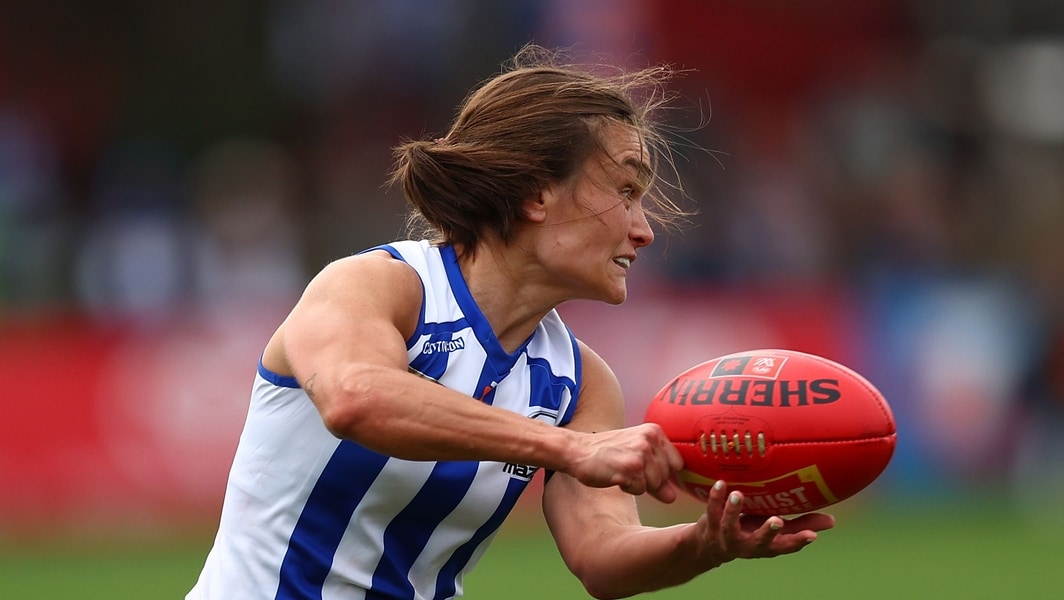
Ash Riddell gets a handball away under pressure during round six, 2025. Picture: AFL Photos/Getty Images
Riddell loves to run and train and run and train again, all while still keeping her hand in as a primary school teacher.
North Melbourne provided her the opportunity and the nurturing to become the best accumulator in the game.
Even superstar Garner wasn’t the player at Collingwood she is now. She’s continued to work on her fitness, year after year, and has developed from a solid key forward with excellent marking skills to the best midfielder in the game.
The pair – captain and vice-captain – are now doing the same for the Tripodis and Smiths of the team.
Success begets success, and a dynasty is shaped.
